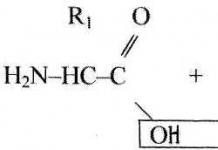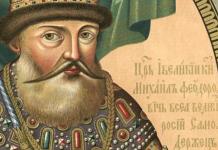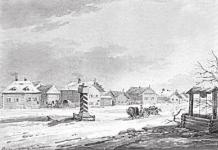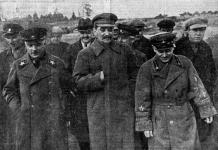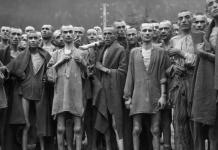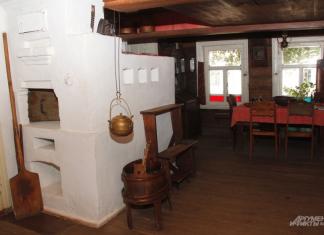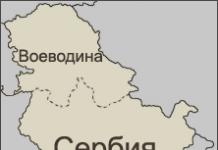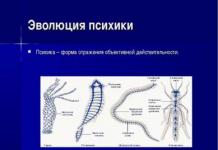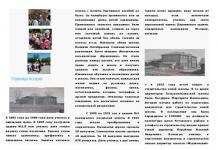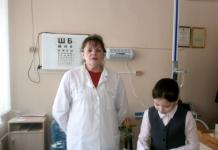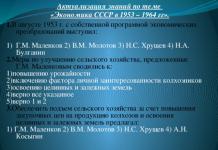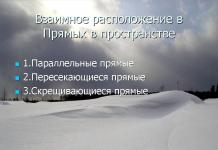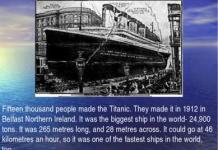January 17, 1945, 74 years ago, during the Great Patriotic War from Nazi German invaders Warsaw was liberated.
The capital of Poland has been under occupation since September 28, 1939. The inhabitants of Warsaw twice raised uprisings. After their suppression, about 80% of the buildings were destroyed. During the occupation, about 800 thousand Varsovians were killed.
The Warsaw-Poznan operation began on January 14, 1945, and on the night of January 17, the rout of the Warsaw group of Nazi troops began. The operation involved the 47th Army of General Franz Perkhorovich of the North, the 61st Army of Colonel General Pavel Belov, the 2nd Guards Tank Army of General Semyon Bogdanov, and the 1st Army of the Polish Troops of the 1st Belorussian Front. By noon on January 17, the Soviet-Polish forces completely liberated Warsaw.
As the participants in the liberation of the city recall, on the streets of the Polish capital they saw “only ashes and ruins covered with snow. The inhabitants of the city were emaciated and dressed almost in rags. Of the one million, three hundred and ten thousand people of the pre-war population, only one hundred and sixty-two thousand remained in Warsaw ... ".
In honor of the liberation of Warsaw, fireworks were given in Moscow. Particularly distinguished in the battles for the city formations and units began to be called "Warsaw".
At the suggestion of the People's Commissariat of Defense of the USSR, the medal "For the Liberation of Warsaw" was established, which was received by about 700 thousand people.
In the exposition " Kuban during the Great Patriotic War» Krasnodar State Historical and Archaeological Museum-Reserve. E. D. Felitsyn, you can see the history of the liberation of Europe and the medals established for these events.


On January 17, 1945, the Red Army liberated Warsaw from the Nazis. This operation became one of the most successful and thoughtful of the entire war - it took the troops only a few days after the start of the offensive to capture the capital of Poland.
By mid-January 1945, the troops of the 1st Belorussian Front occupied a line along the Vistula River (from Serock to Yuzefuw), holding bridgeheads on its western bank in the areas of Magnuszew and Pulawy. The 9th Army of the fascist German Army Group "A" (since January 26 - "Center") was defending in front of them.
The liberation of Warsaw was the result of an offensive by Soviet troops launched on January 12, 1945 on the entire front from the Baltic to the Carpathians. This strategic operation was called "Vistula-Oder".
The time of its beginning was largely due to the fact that significant Wehrmacht forces in December 1944 were pulled from the Eastern Front to the west. Germany at this time made its last attempt to carry out the offensive. The operation was called "Ardennes".
The idea of the Soviet command was to dismember the opposing enemy grouping and defeat it in parts during the "Warsaw-Poznan" operation.
According to the plan of the Headquarters of the Supreme Command, the 61st Soviet Army delivered the main blow. Relying on the bridgeheads at Varka and Pulaw, she had to push back the enemy and go to Grodzisk and Madzharin. The 47th Soviet Army, after forcing the Vistula, bypassing Warsaw, advanced in the direction of Blonie.
 The "Warsaw-Poznan" operation of the troops of the 1st Belorussian Front began with a surprise attack in the early morning of January 14th. Within an hour, the advanced battalions advanced 2-3 km already, without meeting organized resistance. Polish troops took an active part in the liberation of Warsaw. But, by agreement with the Soviet command, the 1st Army of the Polish Army was to launch an attack only on the fourth day of the offensive - i.e. January 17. This day was later recorded in history as Warsaw's Liberation Day. To the right of the 1st Polish Army was the 47th Soviet Army, to the left - the 61st. This combined blow from the flanks pinched Warsaw into gigantic external pincers and threatened to completely encircle the entire Nazi group. Internal pincers were to create units of the 1st Polish Army.
The "Warsaw-Poznan" operation of the troops of the 1st Belorussian Front began with a surprise attack in the early morning of January 14th. Within an hour, the advanced battalions advanced 2-3 km already, without meeting organized resistance. Polish troops took an active part in the liberation of Warsaw. But, by agreement with the Soviet command, the 1st Army of the Polish Army was to launch an attack only on the fourth day of the offensive - i.e. January 17. This day was later recorded in history as Warsaw's Liberation Day. To the right of the 1st Polish Army was the 47th Soviet Army, to the left - the 61st. This combined blow from the flanks pinched Warsaw into gigantic external pincers and threatened to completely encircle the entire Nazi group. Internal pincers were to create units of the 1st Polish Army.
January 14, 1945 - the first day of the "Warsaw-Poznan" operation
During the offensive, the troops of the 5th Shock and 8th Guards armies advanced up to 12 km on January 14, and the troops of the 61st army crossed the Vistula River on ice and wedged into the enemy defenses to a depth of 3 km. Here is what veteran of the Great Patriotic War Ivan Alekseevich Brigida says about this: “The ice on the river was not strong. When they went along it, he could not stand it, crackled. They were confused, the bulk turned back. ”
Ivan Brigida, foreman Zhukov and four more fighters pulled ahead and reached the opposite shore. The Germans, seeing that the offensive was going on with large forces, at first retreated without a fight.
“And when they noticed that we had a hitch, they returned to their trenches and opened fire on us. We had a captured German machine gun, and we repulsed the attack. At this time, ours made another attack. We secured their breakthrough in the occupied area with our fire, ”says the war veteran.
For heroic actions during the crossing of the Vistula, foreman Zhukov received the title of Hero Soviet Union, and Ivan Brigida - the Order of Glory II degree.
January 15, 1945 - the second day of the "Warsaw-Poznan" operation
On January 15, formations of the 1st Guards Tank Army reached the Pilica River. The 11th and 9th Panzer Corps liberated Radom by the morning of January 16th. The 47th Army, having gone on the offensive on January 16, drove the enemy back behind the Vistula and crossed it on the move north of Warsaw. On the same day, in the zone of the 5th Shock Army, the 2nd Guards Tank Army was introduced into the breakthrough, which, having made a swift throw for 80 km in a day, went to the Sokhachev area and cut off the escape routes of the Warsaw enemy grouping.
German troops, trying to contain the onslaught of the Soviet troops, used the barbaric tactics of taking hundreds of Polish civilians hostage.

Church and 300 hostages
On the outskirts of Warsaw, the fighters of the 260th sapper division learned from a defector that the Nazis had driven more than three hundred Poles into the church, and were preparing to destroy them. Ivan Brigida took part in the operation to free the hostages.
“We passed through the swamp unnoticed. In the town, without much difficulty, we found a church, we look, one sentry is guarding. They silently removed it, broke the lock, opened the door, and told the Poles: “Come out, just quietly, without noise,” recalls the veteran.
But the Poles, excited by their salvation, with cries of joy, rushed to thank Soviet soldiers. The Germans immediately opened fire on both civilians and Red Army soldiers.
“In this fight, I lost my best friend Peter Romanov. We fought with him since June 1941,” says Ivan Brigida.
January 16 - the third day of the "Warsaw-Poznan" operation
On January 16, 1945, at 7:55 a.m., Polish and Soviet units began artillery preparation on the Warsaw sector of the front. Clearly visible from the command post, the Polish soldiers, scattered in a chain, ran forward without lying down. The enemy opened fire on them. Shells burst on the river, breaking the ice. But by this time, the advanced units had already reached the left bank and began to storm the dam.
The command sent squadrons from the right bank to support them. The ice was darkened by many people. The Polish national anthem, transmitted from the command post on the radio, sounded over the river. Another minute - and the red panels of the squadron colors fluttered at the top of the dam.
An hour later, the Poles captured the villages of Chernidla and Tseshitsa. And by evening, the lead squadrons had already begun advancing to Yezernaya. During the night, the lancers occupied several more villages: Opach, Benkova, Kopyty, Belyaeva, Obory, Pyaski. It was a success.
On the third day of the "Warsaw-Poznan" operation, the resistance of the Germans on both flanks was broken. Soviet tanks"cut" communications in the rear of the 9th german army. The front of the enemy trembled and wavered. In fact, the Warsaw operation was already won by the Red Army. Realizing the impossibility of holding Warsaw, the Nazis began to gradually withdraw their garrisons from the urban areas of Lazenok, Zoliborzh, Vloch and the city center.
January 17 - the fourth day of the "Warsaw-Poznan" operation
On the night of January 16-17, the main forces of the 1st Army of the Polish Army crossed the Vistula on ice and built bridges. Dismounted platoons moved forward from the islands. Artillery fired over their heads from the shore. Mortars fired.
By dawn on January 17, Polish troops broke into Jezernaya and took control of the junction of coastal highways to Warsaw. Early in the morning, Soviet and Polish aircraft appeared over the Nazi positions in Warsaw. Fierce clashes in Warsaw itself took place on Marszałkowska Street and Tamka Street, near the Main Station. Soon the 1st separate cavalry brigade, pushing back small enemy barriers, entered Warsaw and in the Krolikarni area connected with units of the 6th Polish infantry division. At 10 o'clock in the morning, a white and red flag was hoisted over the ruins of the Main Station.
And at 2 pm on January 17, the commander of the 1st Polish Army, General Poplavsky, was able to send a historical telegram to the Provisional Polish Government in Lublin: "Warsaw is taken!"
Rallies sprang up spontaneously on the streets of Warsaw. Polish soldiers warmly embraced the Soviet soldiers passing through the streets. At the church of St. Wawrzynets, the choir sang "Varshavyanka".
 The troops that participated in the battles for the liberation of Warsaw, by order of the Supreme High Command of January 17, 1945, were thanked and saluted in Moscow with 24 artillery salvoes from 324 guns. Five months later, by the Decree of the Presidium of the Supreme Soviet of the USSR of June 9, 1945, the medal "For the Liberation of Warsaw" was established. The losses of the Soviet troops during the "Warsaw-Poznan" operation amounted to more than 43 thousand people killed and missing.
The troops that participated in the battles for the liberation of Warsaw, by order of the Supreme High Command of January 17, 1945, were thanked and saluted in Moscow with 24 artillery salvoes from 324 guns. Five months later, by the Decree of the Presidium of the Supreme Soviet of the USSR of June 9, 1945, the medal "For the Liberation of Warsaw" was established. The losses of the Soviet troops during the "Warsaw-Poznan" operation amounted to more than 43 thousand people killed and missing.
Medal "For the Liberation of Warsaw"
The medal "For the Liberation of Warsaw" was awarded to soldiers of the Red Army, Navy and the troops of the NKVD - direct participants in the heroic assault and liberation of Warsaw in the period January 14-17, 1945, as well as the organizers and leaders of military operations during the liberation of this city. The medal "For the Liberation of Warsaw" was made of brass and had the shape of a regular circle with a diameter of 32 mm.
 On the front side at the top along the circumference is the inscription "FOR LIBERATION", in the center there is an inscription on the ribbon "WARSAW2", at the bottom there is a five-pointed star with rays diverging from it. The front side of the medal is bordered with a border. On the reverse side of the medal is the date of the liberation of Warsaw “January 17, 19452, above the date there is a five-pointed asterisk. According to the latest data, 701 thousand 700 people were awarded the medal "For the Liberation of Warsaw".
On the front side at the top along the circumference is the inscription "FOR LIBERATION", in the center there is an inscription on the ribbon "WARSAW2", at the bottom there is a five-pointed star with rays diverging from it. The front side of the medal is bordered with a border. On the reverse side of the medal is the date of the liberation of Warsaw “January 17, 19452, above the date there is a five-pointed asterisk. According to the latest data, 701 thousand 700 people were awarded the medal "For the Liberation of Warsaw".
"Taken" and "liberated" European cities
The awards for the liberation of seven major European cities were divided into two categories: one was marked "for the capture", on the other - "for the liberation".
The author of the book “Awards of the Second World War”, candidate historical sciences Dmitry Surzhik.
"Enemy cities, that is, cities located directly on the territory of the Third Reich or allied states Nazi Germany, took. Well, the cities that were occupied by the Germans were liberated, ”the historian explained.
The territory of Poland was occupied, and the German troops in Warsaw offered little resistance.
“It was the strength of the resistance and the participation of the local population in the fight against the Nazi troops that were taken into account by the leadership of the USSR,” says Dmitry Surzhik.
This reasoning has one flaw - Prague, peacefully annexed to Germany, and part of the Reich itself, for some reason, our troops "liberated", and not "took".
The liberation of Warsaw was met by part of the Polish population not quite friendly.
 “From the memoirs of one of the veterans, it follows that before entering Warsaw, a secret order was circulated among the troops to increase vigilance. I remember the words of a participant in the war: "Enter the city - one hand is free, and the other is on a pistol in your pocket," says Dmitry Surzhik.
“From the memoirs of one of the veterans, it follows that before entering Warsaw, a secret order was circulated among the troops to increase vigilance. I remember the words of a participant in the war: "Enter the city - one hand is free, and the other is on a pistol in your pocket," says Dmitry Surzhik.
According to the historian of the Great Patriotic War, after the liberation of Warsaw, cases of deliberately poisoned products were sold to Soviet soldiers in the city.
“I must say that after the liberation of the territory of the Soviet Union, and the exit of our troops to the state border, Glavpur (Main Political Directorate) carried out large-scale explanatory work among the troops. Soldiers and officers were explained the need to “crush” the Nazis, and this required the liberation of the occupied territory of Europe, ”explains the candidate of historical sciences.
The soldiers of the Red Army themselves, according to Dmitry Surzhik, who received medals "for the capture" or "liberation", did not make any claims, and did not ask questions about the differences in the wording.
It was taken after a short siege on September 28, 1939. From this moment until the liberation of Warsaw Soviet troops in 1945, more than 800 thousand of its inhabitants died, 82% of city buildings turned into ruins, and 90% of architectural monuments were destroyed. Polish patriots twice unsuccessfully raised uprisings against the invaders - in 1943 and 1944. For the first time, Jews driven into the Warsaw ghetto tried to organize resistance to the Nazis, and the second time, the Polish population of the city took up arms. This tragic episode will be discussed in more detail below.
On the outskirts of Warsaw
The liberation of Warsaw from the Nazis was preceded by a large-scale military operation"Bagration", carried out by the forces of the 1st Belorussian Front, commanded by a native of the Polish capital - Marshal of the Soviet Union K.K. Rokossovsky (his portrait is given below). Its result was the expulsion of the Nazis from Belarusian land, after which in July 1944 the Soviet troops came close to Warsaw.
A further offensive was continued in mid-September of the same year. But, despite the efforts made, it was not possible to capture the entire city, but only one of its districts, which was called Prague. Fortified in positions along the banks of the Vistula, the Red Army over the next months built up its forces and prepared for a decisive offensive. In the last days of November, an order was received from the Headquarters of the Supreme Commander-in-Chief to resume hostilities to liberate Warsaw.
Destruction of the Polish capital
In turn, the Germans, realizing the proximity of a decisive assault, were intensively preparing for the defense of the city. Even earlier, Hitler proclaimed the Polish capital a fortress of special strategic importance, and paid special attention to the selection of officials who led its garrison.
Shortly before the start of the main events, he appointed SS-Standartenführer Paul Otto Goebel as commandant of Warsaw, who, after taking office, received Himmler's personal order to destroy all city buildings, with the exception of those that were of interest as defensive structures. Personnel units that defended the capital, was to be placed in the basements of destroyed buildings. Despite the fact that this barbaric order was not carried out in full, after the liberation of Warsaw, Soviet soldiers and officers were presented with a horrific sight of an almost completely destroyed city.
City turned into a fortress
The Medal for the Liberation of Warsaw is not in vain considered one of the most honorary awards for feats of arms during the liberation of Europe from the Nazis. After all, the victory in this sector of the battle with fascism was given at an incredibly heavy price.

Suffice it to say that 17 thousand Wehrmacht soldiers were thrown into the defense of the city, who had 345 guns and mortars at their disposal. Military historians have calculated that for every kilometer of the defensive line there were on average up to 300 manpower, 8 guns and 1 tank. In addition, the German command took all measures to maintain an all-round defense of the fortress.
Scouts who became politicians after the war
Before the start of the offensive, the forces of the 1st Army of the Polish Army, which also took part in the liberation of the city and stationed on the opposite bank of the Vistula, carried out a number of reconnaissance operations. It is curious to note that the groups that carried out raids on the territory occupied by the enemy included two officers who later gained world fame.
One of them was Wojciech Jaruzelski, the future president of Poland, and Mark Epstein, who was destined to become a general of the Israeli armed forces and the ambassador of this state to the United States. Thanks to their heroism, the Headquarters of the command received comprehensive data on the number of enemy forces and the places most vulnerable during the assault.
The order to start the offensive
The liberation of Warsaw by the Soviet troops was part of a large-scale offensive, as a result of which it was planned to push the German troops back to the Oder. Subsequently, military historians called it the Vistula-Oder operation. According to the plans of the command, its start was planned for January 20, 1945, but due to a number of failures that befell the forces then anti-Hitler coalition, British Prime Minister Winston Churchill, through his ambassador, turned to Stalin with a request to speed up the start of the offensive. For this reason, the deadline specified in the order was postponed 8 days earlier.

From the documents that fell into the hands of historians after the war, it is known that German intelligence, having information about the scale and timing of the impending offensive, reported to the headquarters ground forces Wehrmacht, but there the data obtained was considered unlikely and was not taken into account. Hitler himself treated the received reports with the same frivolity, believing that this was just the result of Soviet disinformation.
The beginning of a massive offensive
According to the order received from the Headquarters of the Supreme Commander-in-Chief, the general offensive began on January 12, 1944 and covered the entire territory from the Baltic to the Carpathian Mountains. At the same time, the troops of the 1st Belorussian Front, which directly participated in the liberation of Warsaw, were located on the eastern bank of the Vistula, occupying the territory between the cities of Pulawy and Magnuszew.
From there, delivering the main blow to the garrison guarding the city was entrusted to units of the 61st Army, which, having launched an offensive from the bridgeheads of Pulaw and Varki, threw the enemy back a considerable distance. At the same time, units of the 47th Army bypassed Warsaw and struck from the side of the city of Blonie. Such a maneuver made it possible to dismember German group and then destroy it piece by piece.
Battles for Warsaw
The liberation of the Polish capital was called the Warsaw-Poznan operation in the history of the war. It began at dawn on January 14 and developed very rapidly. Parts of the 9th and 11th tank corps drove the Germans out of Radom, and the 1st Guards Tank Army at that time reached the Pilica River. The next day, the 2nd Panzer Army, having made a powerful throw for 85 km, cut off the retreat path for the Warsaw group of Germans.

In accordance with the general disposition, on March 16, units of the Polish Army entered the battle, crossing the Vistula, to the sound of the national anthem, which was broadcast through powerful loudspeakers. Despite the fact that many of them died under the fire of German artillery, it was no longer possible to turn the tide of events, and soon the city dam was under the control of the attackers. After that, the Polish cavalry was thrown at the enemy.
Throughout the day and the following night, the offensive developed with incredible speed, and by morning the Germans were driven out of a number of villages located in the immediate vicinity of Warsaw. These included: Pyaski, Belyaeva, Benkova, Opach, Obora and Kopyty. Realizing the futility of further resistance, on January 17, 1945, the Nazis began to retreat, and by the end of the day the liberation of Warsaw was completed. The victorious troops occupied the Polish capital.
The motherland duly noted the courage and heroism of the participants in the Warsaw-Poznan operation. Exactly one month after the Victory Day, which marked the end of the greatest of wars, the medal for the liberation of Warsaw was established by a decree of the Soviet government. List of awardees in post-war years constantly increased, since many of the participants in those battles were transferred to other units, and at that time their trail was lost, and some died. Data about them was restored only after a considerable period of time. According to official figures, the list of those awarded the medal "For the Liberation of Warsaw" amounted to 701,710 people.
The episode of the war, causing controversy of contemporaries
With all the heroism of Soviet soldiers and officers shown in the Warsaw-Poznan operation of 1945, the liberation of Warsaw is still considered to be one of the most controversial episodes in the entire Second World War. world war. And the reason for this lies in a number of issues related to political confrontation Soviet Union and the countries of the anti-Hitler coalition.

The fact is that from the first days of the occupation of Poland on its territory, an underground patriotic organization called the Craiova Army entered the fight against enemies. All its actions were coordinated from London by the Polish government-in-exile, which was headed by Stanisław Mikołajczyk.
Churchill's far-reaching plans
When the Soviet troops approached the Vistula in the summer of 1944, and it became obvious that the assault on the Polish capital would begin in the coming days, Winston Churchill began to encourage the leaders of the Home Army to raise in a number of major cities country, and above all in Warsaw, uprisings. However, his efforts were by no means aimed at helping the Red Army.
Even before her approach, the British Prime Minister tried to create pro-British authorities in Poland, which, declaring the country independent, would take it out of the sphere of Soviet influence. As it turned out later, even in the event of the forcible creation of a pro-Soviet administration in the country, it was supposed to provide armed resistance to it by the forces of the same underground Home Army. Simply put, the British tried, taking advantage of the situation, to "subdue" Poland, which at that moment was an easy prey for its liberators, whoever they were.
The tragic outcome of the uprising
The signal to start the uprising was given on July 31 by the commander of the Home Army - General Tadeusz Komorowski. The calculation of the Poles was based mainly on two factors - surprise, which played on initial stage a certain role, and the help of the Soviet troops, who were at that moment on the opposite bank of the Vistula. And this is where they made their fatal mistake. Contrary to their expectations, units of the 1st Belorussian Front suddenly broke off their offensive against Warsaw and left the rebellious Poles face to face with superior German forces.
In this situation, the heads of the governments of Great Britain and America turned to Stalin with a request to immediately resume the offensive and support the Warsaw Uprising. To this they received an answer stating that the formations of the Red Army, having made a throw of almost 500 km, needed rest and were temporarily unable to continue hostilities. In addition, without explaining the reasons, Stalin forbade the acceptance of allied aircraft at Soviet airfields, which delivered weapons and ammunition to the rebels.

As a result, the Poles alone could not resist the numerous German garrison and surrendered on October 2. Despite the announced surrender, most of them were shot. The total number of Poles who died as a result of the uprising amounted to 150 thousand people. When the Home Army was completely destroyed, the Soviet troops resumed their offensive, which ended with the liberation of Warsaw on January 17, 1945.
Negotiations stalled
AT post-war period there is a well-established tendency among Western historians to accuse Stalin of stopping the offensive of the Soviet troops, which resulted in the defeat of the Warsaw Uprising. Formally, this is true, but one should also take into account the reasons that prompted him to make such a decision, and they were very significant.
Back in early August 1944, Stalin met in Moscow with the head of the Polish government in exile, Stanislav Mikolajczyk, who had flown in from London (his photo is given above), who informed the Soviet leader about the impending uprising and asked for support. However, when it came to the formation of the future government, he categorically refused to take into account the interests of the Soviet side.
Then Stalin proposed a compromise - the creation of a coalition government, which would include an equal number of pro-Soviet and pro-English-minded Polish politicians. Mikolajczyk categorically rejected this option as well. In fact, it turned out that he represented the future of his country in accordance with the interests of England, but at the same time paid for with the blood of Soviet soldiers. That is, the Russians should win them a victory, and the British should reap its fruits.
Got what we wanted
It is quite natural that Stalin could not support such a development of events, and on August 4, Soviet troops froze on the way to the Polish capital. To the credit of the Soviet leader, it should be said that even in such a situation, he left Mikolajczyk a chance to save the Craiova Army from certain death, and on August 9, just before leaving for London, calling him to him, he again repeated the proposal to create a coalition government. But the Polish leader continued to persist, which is why he signed the death warrant for thousands of his compatriots.

Thus, in response to the accusations of the Soviet Union of betraying the interests of Poland, it can be objected that Stalin only gave the Poles the opportunity to decide their own fate, relying on the allies they chose for themselves. If, on Churchill's orders, they decided to start an uprising, they should first of all have a sober assessment of their capabilities. The Soviet Union in this situation only stepped aside, not supporting the Craiova Army, but not preventing it from acting independently.
The newspaper illustration shows the parade of the Polish Army in Warsaw in January 1945.
On the same day, January 17, 1945, Warsaw and Pest, part of Budapest, were liberated from the Nazis.
Warsaw was liberated on January 17, 1945 by the troops of the 1st Army of the Polish Army, followed by the troops of Marshal Zhukov. The city was in ruins, there was practically no population.
Literally 12 years ago, official Polish historians wrote the truth about the events of 1944-45. In particular, they admitted that Warsaw was destroyed not by Soviet aircraft, but by special groups of German demolitionists.
M. Tymovsky, J. Kenevich, E. Holzer "History of Poland", M., "The whole world", 2004:
“In 1943, the Nazis razed the territory of the Warsaw Ghetto to the ground. New destruction occurred during the Warsaw Uprising. After the surrender of the rebel forces, the remaining population, about 600 thousand people, was expelled by the Nazis from Warsaw, and over the next few months the deserted city was subjected to methodical destruction. About 80% of the buildings were destroyed, archives, libraries, and most of the museum collections were burned. Only on January 17, 1945, the Red Army and the First Army of the Polish Army, which fought next to it, entered the city, which was a complete ruin.
V. Nikolsky "GRU during the Great Patriotic War", M., Eksmo, 2005:
“01/17/1945, the troops of the 1st Belorussian Front liberated Warsaw. The capital of Poland lay in a heap of ruins. There are hardly a few dozen habitable houses left in the former large European city. Monuments, museums, theaters - everything was destroyed, apparently by special subversive teams, since only a part of the buildings were damaged by shelling and bombing from the air, as it was established later.
In Budapest - i.e. in Buda and Pest - the Nazis did not blow up houses - because. the Hungarians remained their faithful allies. In addition, the barbaric plan of the Nazis to destroy all the prisoners of the Jewish ghetto was thwarted as a result of the heroic offensive of the Soviet troops. Pest was liberated on the night of January 17-18, 1945.
A. Vasilchenko “100 days in a bloody hell. Budapest..”, M., 2008:
“On January 17, a decisive battle began on the Pest side. At 1935 hours, Pfeffer-Wildenbruch nevertheless received permission to leave the eastern part of the Hungarian capital (Pest proper). It was already about how to merge the German units, which were located in Buda and Pest. At the same time, it was a miracle that the Germans were able to transfer armored vehicles over the almost destroyed bridges to Buda in one day. On the same day, the Erzhebet bridge was blown up by the Germans. They feared that it would fall into the hands of Soviet soldiers.”
On January 18, 1945, the Soviet army began fighting in the Budapest ghetto with an unexpected night assault. Soviet soldiers saved thousands of lives of Hungarian Jews at the cost of their lives. This feat is forgotten, and the Europeans then began to consider these soldiers as occupiers, and the fascists who rebelled in Hungary in 1956 as democrats who fought against Soviet tyranny.
Caesar Solodar "Wild Wormwood", 1986:
“On January 17, Hero of the Soviet Union General Afonin ordered a strike towards the ghetto. The blow was certainly required sudden. The cruelty of the enemy was known: he did not leave his prisoners alive. In one town near Budapest, the Nazis machine-gunned many thousands of ghetto prisoners just before the arrival of the Soviet Army. It was impossible to delay. At night, our sappers cut all the cables and wires leading to the ghetto - after all, explosive mechanisms could be set in action through them. Early in the morning of January 18, our soldiers destroyed the machine-gun nests of the Nazis with grenades and broke into the wall of the ghetto. The Nazis did not have time to carry out their brutal plan. But they resisted. Most of our people who liberated the Budapest ghetto died in subsequent battles for the Hungarian capital.”
In 2016 the Central Bank Russian Federation plans to put into circulation a series of coins "Cities - the capitals of states, liberated by Soviet troops from Nazi invaders." One of the coins of this series - 5 rubles "Warsaw. 01/17/1945".
Warsaw was occupied by the Nazis in September 1939, with the outbreak of World War II, and liberated on January 17, 1945, as a result of an operation by Soviet troops together with Polish volunteers from the 1st Army of the Polish Army.
According to Hitler's plan, Warsaw was to be completely destroyed. After the Warsaw Uprising in 1944, Hitler ordered the city to be razed to the ground. The Germans carried out the order. Only ruins remained in the city; houses and architectural monuments were destroyed. Only what was necessary to turn the city into a fortified area was not destroyed. The liberation of Warsaw from the Nazis became a symbol of the revival of the country, the ancient capital of Poland, although destroyed, became free, and all its palaces and buildings were restored according to old drawings and photographs.
The liberation of Warsaw is one of the most difficult, bloody operations Soviet army. More than 30 thousand people died during the storming of the city. For four days, our troops, together with the Polish Army, crossed the Vistula, seized bridgeheads and advanced on the city, which the Germans turned into an impregnable fortress. They fought side by side. Therefore, it is no coincidence that after the Victory in Warsaw a monument was erected, which was called "Brothers in Arms". It depicted Russian and Polish soldiers. The monument was erected in 1945, and for many years it was a favorite meeting place for Varsovians. In 2011, the Brothers in Arms monument was demolished. Currently, Poland is the leader among all European countries in terms of the number of acts of vandalism against graves. Soviet soldiers, desecration and demolition of monuments to soldiers-liberators, those who saved the Polish people from fascism. In total, more than 600 thousand Soviet soldiers and officers died in the battles for the liberation of Poland.
Coin 5 rubles “Warsaw. 01/17/1945" can become a valuable exhibit of your collection, as well as a wonderful gift to anyone who is interested in the history of the Great Patriotic War.
| A country | the Russian Federation |
| coin name | Warsaw. 01/17/1945 |
| Series | Cities - capitals of states liberated by Soviet troops from Nazi invaders |
| Denomination | 5 rubles |
| Obverse | in the center of the disk - the denomination of the coin in two lines: "5 RUBLES", below - the inscription: "BANK OF RUSSIA", below it - the year of minting: "2016", on the left and right - a stylized branch of a plant, on the right near the edge - the trademark of the coin yard |
| Reverse | in the center of the disk - an image of fragments memorial complex“Cemetery-mausoleum of Soviet soldiers” in Warsaw against the background of contour images of the architectural structures of Warsaw, below - a horizontal inscription: “JANUARY 17, 1945”, above along the edge - the inscription: “WARSAW” |
| Alloy | Nickel plated steel |
| Circulation, pcs. | 2 000 000 |
| Date of issue | 2016 |
| Catalogue number | 5712-0043 |
| Artist | A.A. Brynza |
| Sculptor | S.A. Kornilov |
| Chasing | Moscow Mint (MMD) |
| Edge decoration | 12 sites with 5 reefs each |
| Quality | AC |
| Purchase | You can buy such a coin in any online store, or from official dealers. |
| Price | The cost of the coin is 30-50 rubles, depending on the condition of the coin. |


